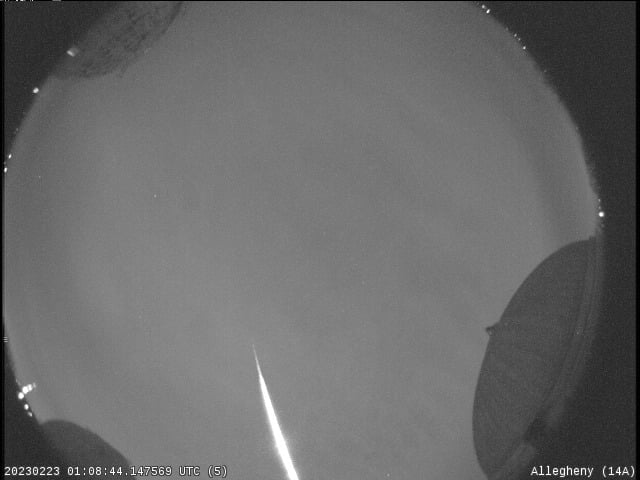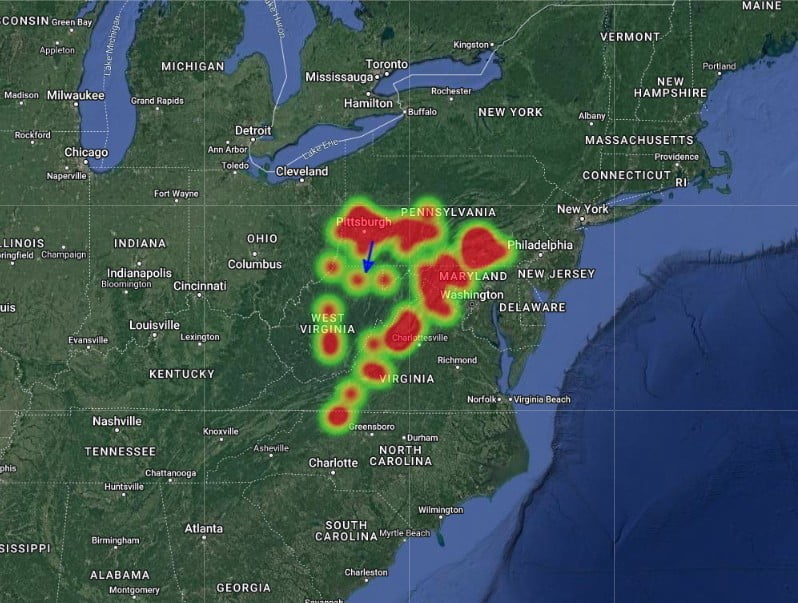Bright fireball south of Pittsburgh, Pennsylvania

A bright fireball was seen and recorded just south of Pittsburgh, Pennsylvania at 01:08 UTC on February 23, 2023. The event lasted between 3 and 7 seconds before the object disintegrated.
The American Meteor Society (AMS) received 59 reports from Maryland, North Carolina, Pennsylvania, Virginia, and West Virginia.
The event has been recorded on a private dashcam from Staunton and by a meteor camera in Pittsburgh belonging to the NASA All Sky Fireball Network.


According to an analysis of the eyewitness accounts and video data, the fireball was first spotted at an altitude of approximately 83.7 km (52 miles) above the town of Belle Vernon, Pennsylvania.
It proceeded to travel a distance of 56.3 km (35 miles) in a slightly west-of-south direction, with a speed of approximately 72 420 km/h (45 000 mph), before disintegrating at a point 51.5 kilometers (32 miles) above Mt Morris, located just north of the Pennsylvania-West Virginia state line.
References:
1 Event #1178-2023 – American Meteor Society – February 23, 2023
2 Fireball over Pennsylvania – NASA Meteor Watch – February 23, 2023
Featured image credit: NASA All Sky Fireball Network


It is not a planet but a dwarf Star (the companion of the Sun) https://www.yahoo.com/news/elusive-planet-nine-could-surrounded-153557496.html
Earth’s magnetosphere is weakening and the number of fireballs and asteroids that are approaching the Earth’s atmosphere has increased further in 2023. Obviously, there is a physical reason why more and more meteorites from the asteroid belt are being pushed in the direction of the inner planets of the solar system, and this trend started in 1960s. The reason has to do with the approaching of the Sun’s companion to the inner planets of the solar system. When the Sun reaches the highest position in the galaxy, its companion the brown dwarf passes through the inner part of the solar system. All the ancient civilizations of Iraq knew the whole truth about the celestial bodies of the solar system including the twin of the Sun that the Sumerian called it Nibiru, while the Babylon identified with Marduk. However, when this brown dwarf passes Jupiter it will start reflecting the light of the Sun and telescopes in space and on land will detect it. However, the biggest cataclysms in history (the biggest natural disasters and calamities in the ancient history of Earth) have always been the result of the passing of the twin of the Sun close to the orbit of the Earth. Read my previous article on the following link https://watchers.news/2019/10/21/brown-dwarf-approaching-inner-planets-of-the-solar-system/